September 17th Lahaul adventure continues…
The spiritual power of Lahaul, known as beloved Garsha Khandroling to Buddhists, lies in its sacred trinity of Drilbu Ri, Phakpa, and Markul Devi. These sites form the Three Vajras of right body, speech, and mind. The Three Vajra concept is akin to the Western religious concepts of righteous deed, word, and thought.

If you read my previous post, then you already know the experience at the summit of Drilbu Ri is sublime. This mountain is associated with Chakrasamvara, the enlightened body of Buddha. The other sites of the trinity are Phakpa Temple in Triloknath, associated with Avalokiteshvara and enlightened speech, and Markul Devi Temple in Udaipur, associated with Vajravarahi and enlightened mind. (By the way, this is Udaipur in the state of Himachal Pradesh, not the one in Rajasthan.)
After finishing the kora around Drilbu Ri, it seemed natural to visit the other two places, Triloknath and Udaipur, as a continuation of pilgrimage experience. Both are within an hour-and-a-half’s drive from Keylong, so that was my agenda for today! As with Dribu Ri, Hindus and Buddhists alike consider Phakpa and Markul Devi holy sites.

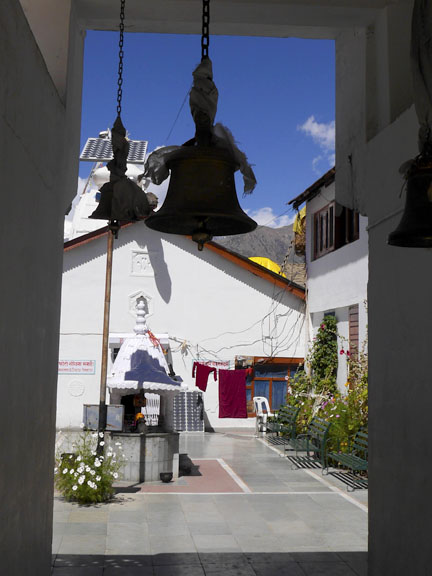
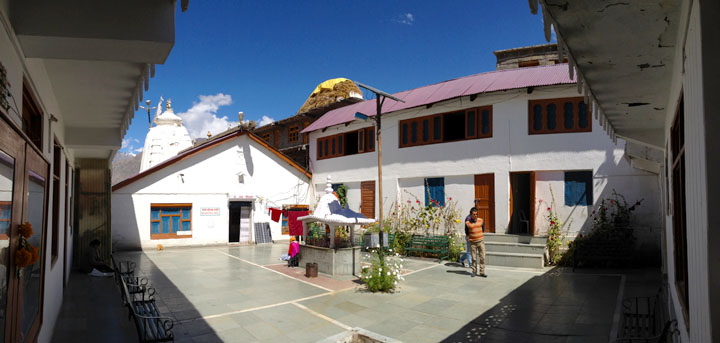
At Phakpa Temple, one can circumambulate the inner sanctum upon entering. The ample interior corridor contains Tibetan Buddhist mani prayer wheels one can spin for manifold blessings. Inside them are Avalokiteshvara’s six-syllabled mantra, Om Mani Padme Hum, the recitation of which is said to activate mental states conducive for peace and enlightenment.

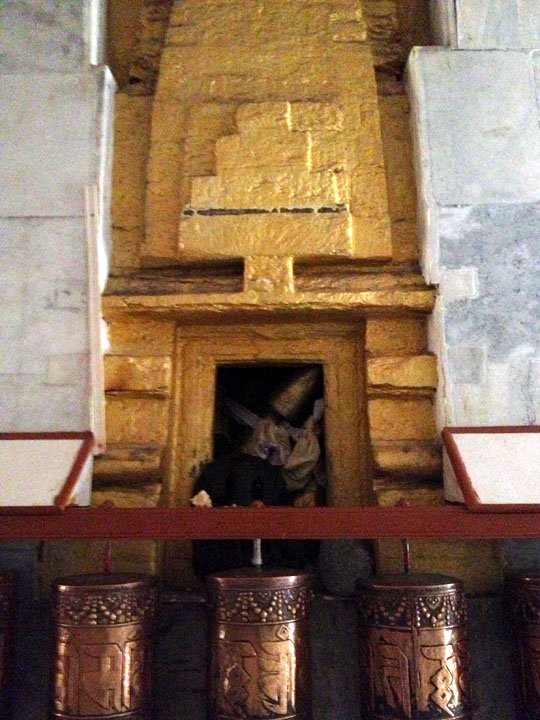
The inner sanctum contains a white marble statue of Avalokiteshvara, bodhisattva of great compassion, believed to be a miraculous self-arisen object found by a shepherd and installed in Triloknath. The statue is revered by Hindus as Shiva.
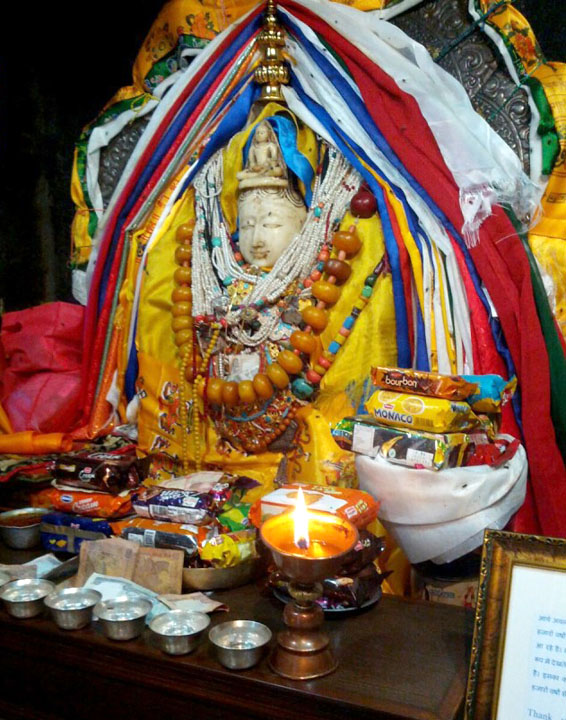
Here is a view of it without ritual embellishments. This is a poster I photographed in the courtyard.
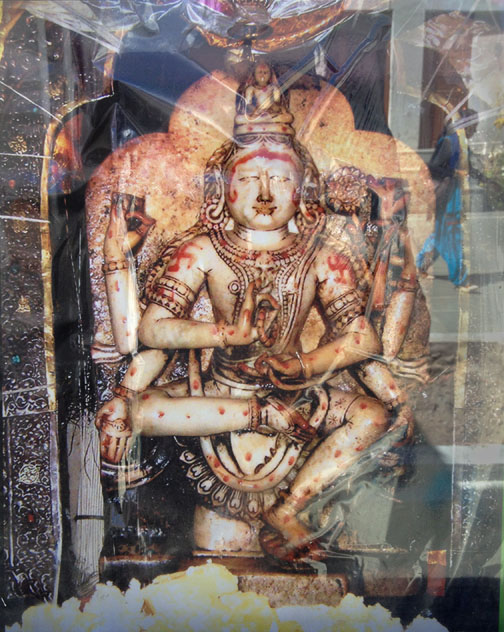
The statue is a six-armed version of Avalokiteshvara. In Tibetan Buddhism, he is also popularly depicted with a thousand arms and eleven heads. This manifestation occurred when Amitabha Buddha, coming to the bodhisattva’s aid, split his head and arms so he could better hear, see, and help the suffering. The Dalai Lama is considered a human incarnation of Avalokiteshvara, or Chenrezig as he is known in Tibetan.
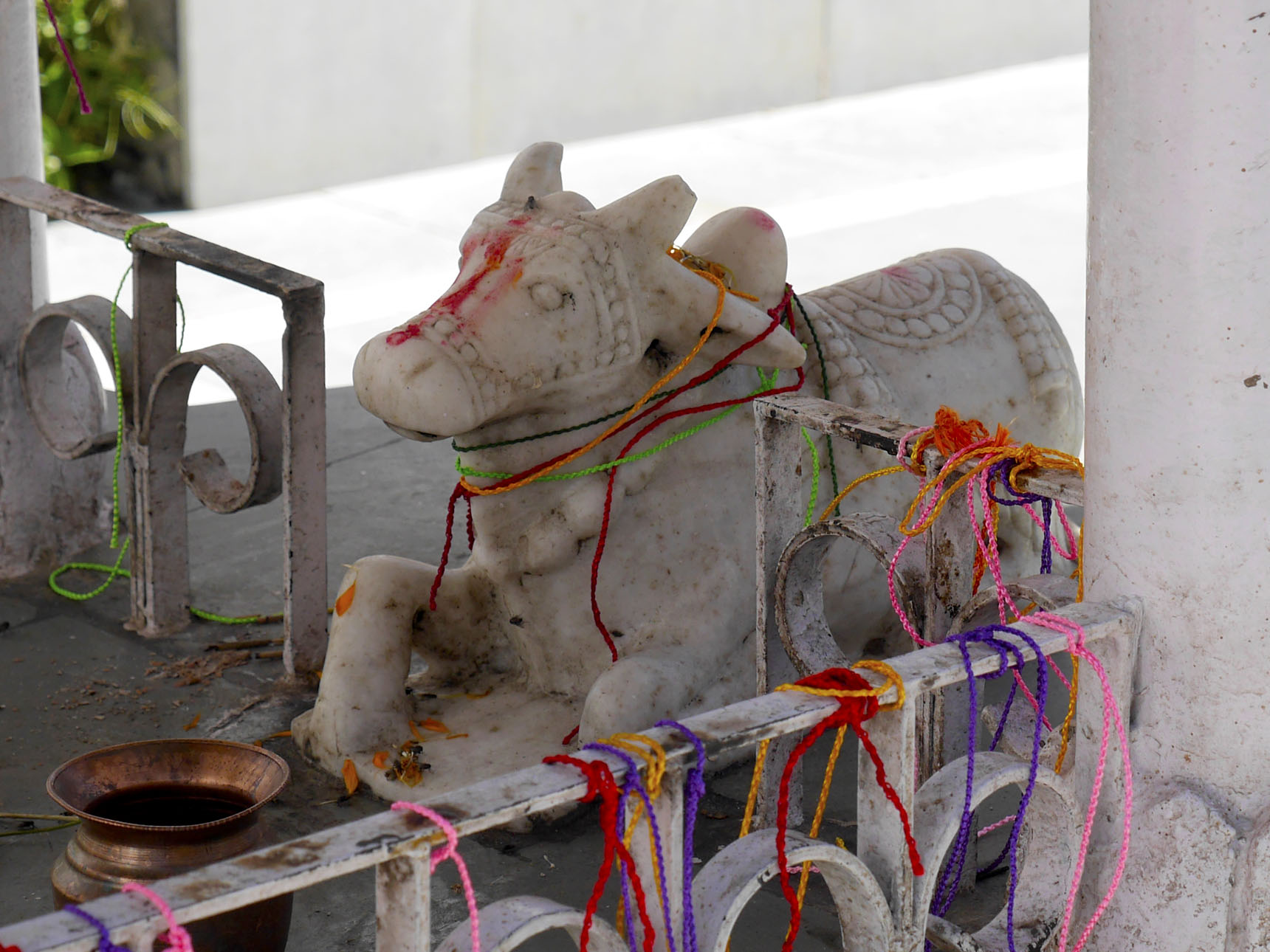
After Triloknath, I headed to nearby Udaipur to see Markul Devi Temple.
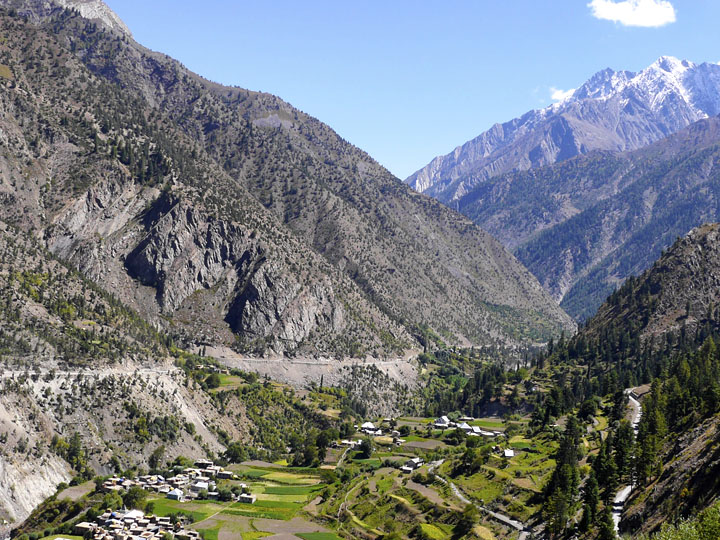
As was the case from Keylong to Triloknath, before long, we hit road construction again and were delayed because all traffic was halted. In this rugged terrain and climate, highways take a beating, and road maintenance and improvement is always happening. This one was a major operation, and not visible in the photo is a large crew of construction workers down the left side of the mountain where the dirt is being deposited.
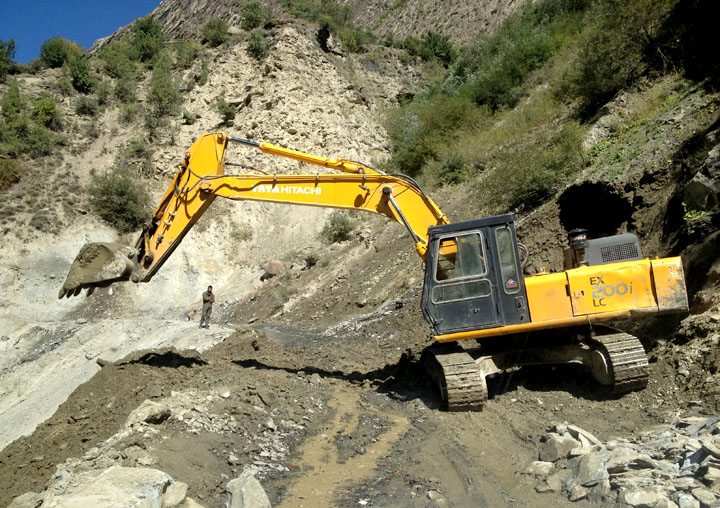
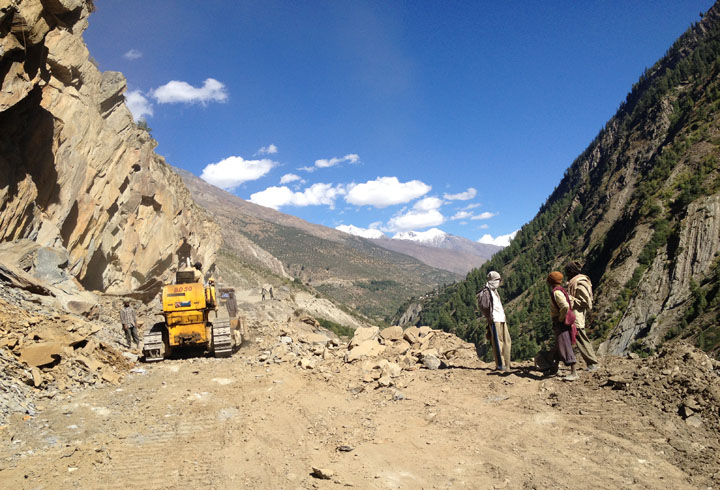
Often road workers are women with young children on their backs. Or sometimes the little ones keep themselves busy playing or sleeping on the construction site. I am not kidding! I have seen children sleeping hazardously close to the edge of a cliff, or running among machinery and equipment. So far, on my travels throughout Spiti and Lahaul, this is true everywhere. It is hard labor. Men and women break rocks by hand with hammers, dig mountainsides with pickaxes, haul dirt in baskets on their heads, and so forth. Driver D tells me most laborers are poor and come from Nepal, or are tribals from other states of India. As itinerant workers, they sleep in makeshift tents right there onsite for the season, until the cold weather comes and road work is halted.

If you have been on an extended trip to see Indo-Tibetan Buddhist sacred sites in Spiti and Lahaul, what is immediately apparent about Markul Devi Temple is that it does not look at all like what you’ve seen elsewhere. Most of the structures I’ve seen from the same period, 11th-12th centuries, have been white-washed or painted mud and stone structures with flat roofs of the same materials, some perhaps thatched. Markul Devi is instead made from wood and stone with a highly pitched wood-shingled gable roof.
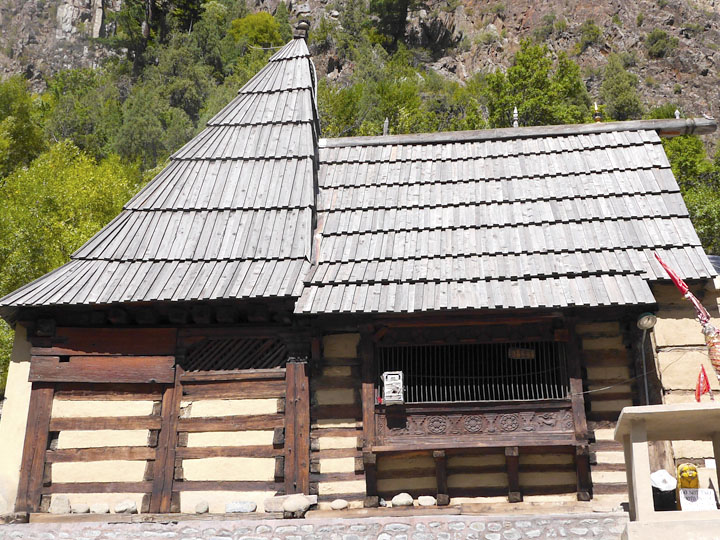
The Indian government traces its architectural style back to 8th century Kashmir, though the current structure is a reproduction from 11th century onward. It is protected by Archeological Survey of India, considered the last building of its kind to exist.
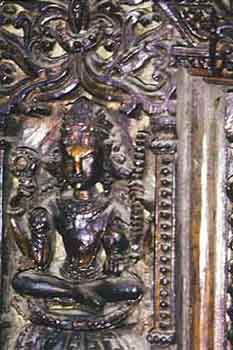
The interior is also different from other Indo-Tibetan interiors I’ve seen. It is a stunning example of fine Indian woodwork. Massive and deeply carved single pieces of wood form nine elaborate ceiling panels. There are several ornate pillars and architraves, window panels, and the decorated facade of the inner sanctum. The fine carvings depict mainly Hindu subjects and figures, but there are also Buddhist references, such as the panel of Shakyamuni Buddha, and the scene with a three-headed Vishnu. The small shrine holding a silver statue of the Hindu goddess Kali is revered by Tibetans as Vajravarahi.
Shown at right is a detail of the wood carving possibly from the facade of the inner sanctum.
So there you have it…Lahaul’s trinity of Drilbu Ri (body), Phakpa (speech), and Markul Devi (mind)–revered by both Hindus and Buddhists. Implicit in their mutual respect for these places and their associated deities is their acceptance of each other’s pantheon. I admire this. An Indian acquaintance once said to me that he believes, ultimately, all gods are the same.
All photos © 2013, Eva Lee.
Dear Eva, I got a link to your description through a Tibetan friend of mine from India and, being quite familiar with Lahaul and Spiti, I just wanted to tell you that I enjoyed so much your post! Thank you and good luck…
Dear Irmtraud,
Thank you for your kind response. I am so glad you enjoyed the posts about Lahaul and Spiti! Wishing you all the best in your creative work and inspirations…